BRIDGTON — On a recent 18-degree day in Bridgton, six newfangled pop-up ice fishing shacks shared Moose Pond with just one old-school shack.
In the last several winters, the pop-up shacks have sprung up – so to speak – on lakes across Maine. They look and function like tall tents, and can be set up and taken down in minutes. The traditional sort, by contrast, are made of wood, metal or fiberglass; typically, fishermen put them up at the start of the season and leave them in one spot until the ice starts to melt.
But as fast as the trendy new ice shacks are catching on, the traditional model still has plenty of fans in Maine.
Just 10 miles down the road on Long Lake in Naples, a very different scene unfolded on the same Saturday. Eight traditional ice shacks hugged the shore near the boat launch, with just two pop-up shacks in sight.
Here, inside a newly built pine shack, as Brenda Day jigged from a fishing hole wearing just jeans and a sweatshirt, she and her husband, Brad, smiled with pride at what they consider their winter camp.
“I’m old school. I enjoy it here,” Brad Day said of the 10-by-7-foot wooden shack he built last year. “It’s our fourth ice shack. We put a lot of thought into how I would build it.”
The first pop-up shelter hit the market in 2005 with the Quickfish Series by the Wisconsin-based Eskimo ice fishing company, the first company to mass produce pop-up ice fishing shacks, said Tony Aloia, the Eskimo brand manager. Since then, Eskimo has sold hundreds of thousands of the portable, lightweight fishing shelters, Aloia said.
Standing in the middle of Moose Pond, John Daggett of Harrison said he got his first traditional model ice-fishing shack when he was in high school. He’d wanted it for years – but he got over it fast. “They are a constant worry. They’re a pain,” he said. “It sits in your yard. Then you worry if it will sink in the ice. Or people break into them just to use them.”
With that, Daggett dropped the roughly 30-pound duffel bag he carried, pulled out a thick red tent, placed it on the ground and pulled the tent-and-pole structure up toward the sky. In an instant, his pop-up ice fishing shack stood before him.
Not far away, Marc Baker of Naples and his childhood friend, Matthew Levensalor of Wilton, were sitting on the lake in lawn chairs, enjoying their four-man pop-up, knowing at any time they could step inside to warm up. They bragged that their insulated shack can reach 95 degrees with the help of a portable heater. But their favorite feature? Convenience.
Using their pop-ups (they each own one), the two have fished Chamberlain Lake in the North Maine Woods, Moosehead Lake, and the Sebago region, where Baker lives.
“With a pop-up, now we decide where to go,” Baker said.
Back in Naples, the Days said they like the traditional model for exactly the same reason: It’s convenient. They set it up at the start of the season by carrying it onto the ice on a trailer, and after that all they need do is drive the two miles from home. Inside, the Days have panoramic views reaching to Mt. Washington, a wood stove, kitchen equipment, even family mementos and decor – a deer skull, a sign a friend made that reads “Shack Life.”
“It’s home,” Brad Day said.
Nearby, Mike Riggs and his father-in-law, Alan Raymond, enjoyed the aluminum ice shack Riggs bought four years ago. It’s equipped with a kitchen and stove, and can fit up to 12 people. Each February, the two fishermen stage a reunion for friends and family there, which is now a legendary gathering.
But the ease of the pop-ups is not lost on Riggs. Once while on an ice fishing trip in Washington County and away for four nights, the daytime temperatures in southern Maine rose to 55. His shack sunk into the ice on Long Lake, then refroze. To reposition it, Riggs said he spent more than two hours chipping the ice, then lifting the 300-pound shack with a car jack. It didn’t deter him, though. He still likes the traditional sort best.
Riggs said the traditional ice shacks are less about what species of fish you catch and more about the ice fishing experience.
“We mostly throw the fish back. The perch in this lake are too skinny and the (hatchery) salmon have no taste,” Riggs said. “But I like having this shack. It’s the way to go. If I want to fish other lakes, I just fish without a shack.”
Send questions/comments to the editors.


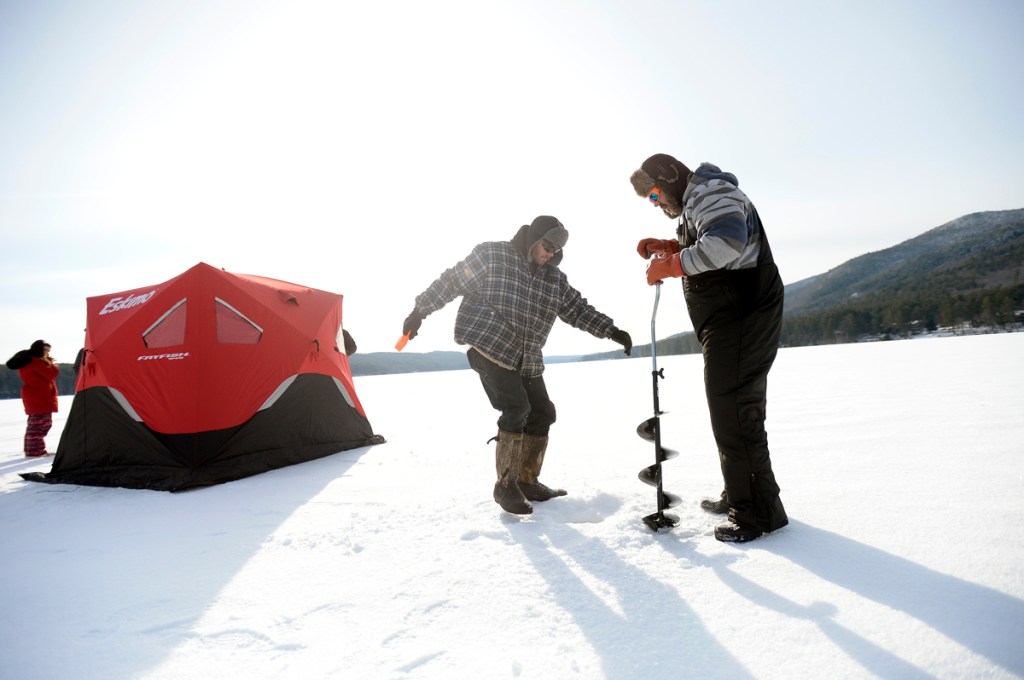
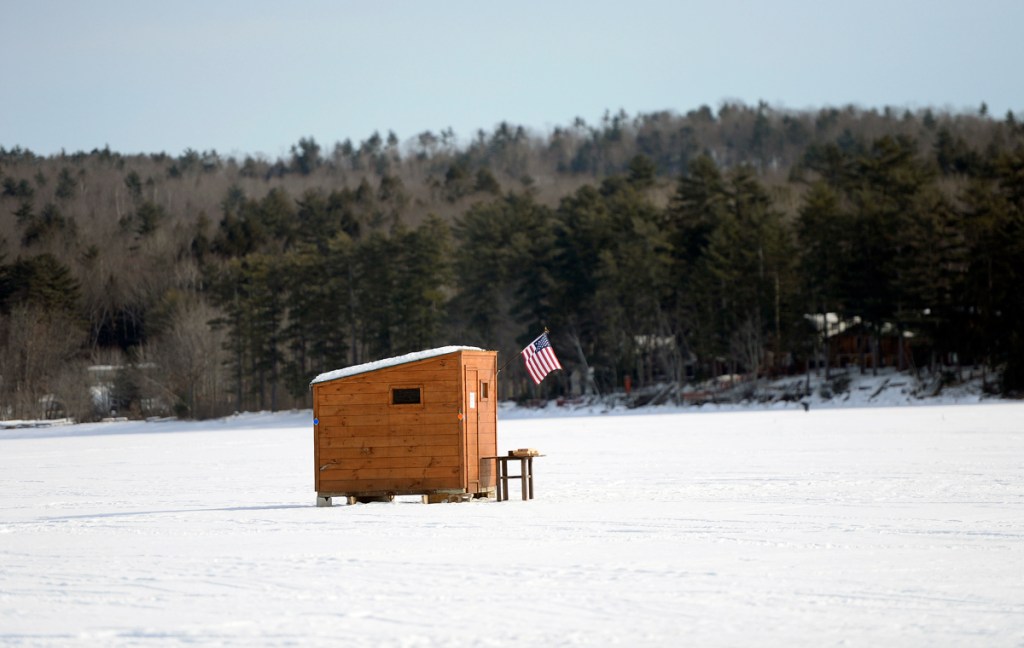
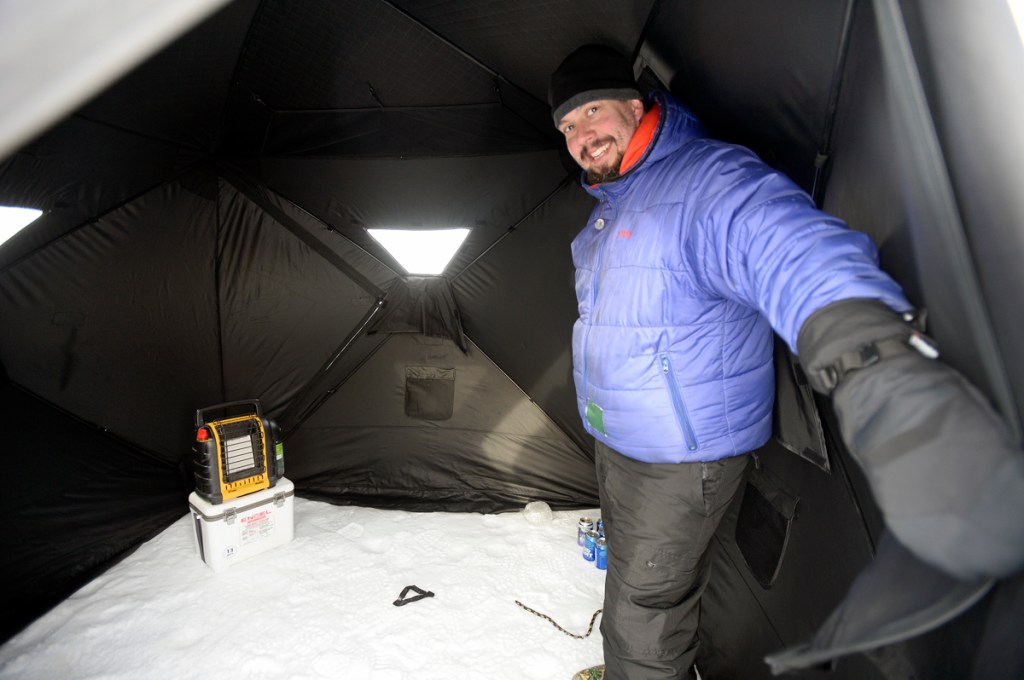

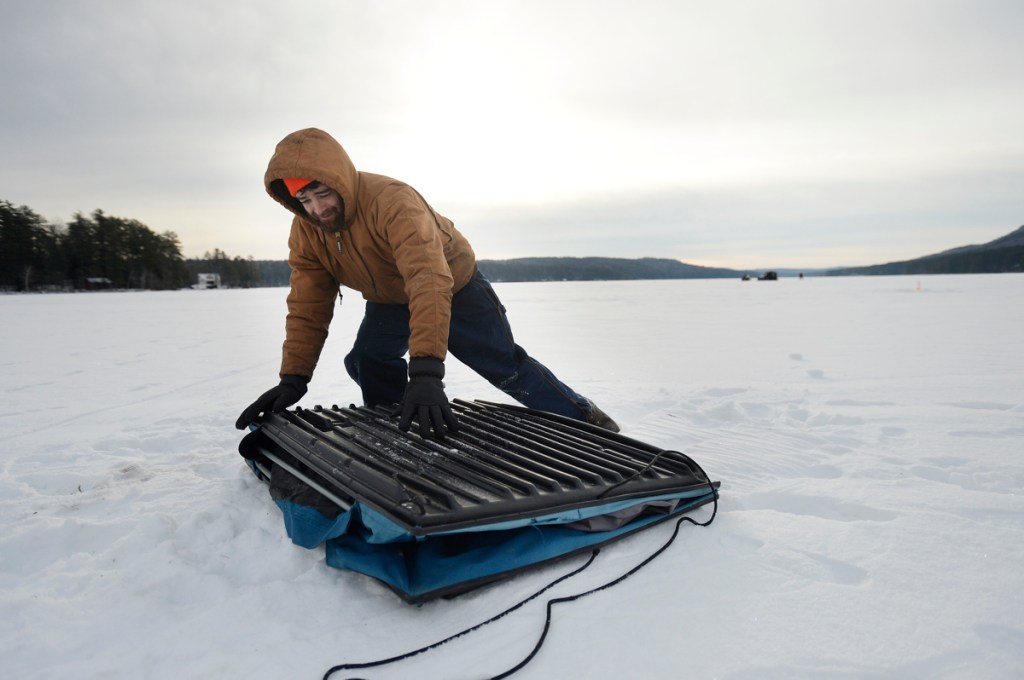

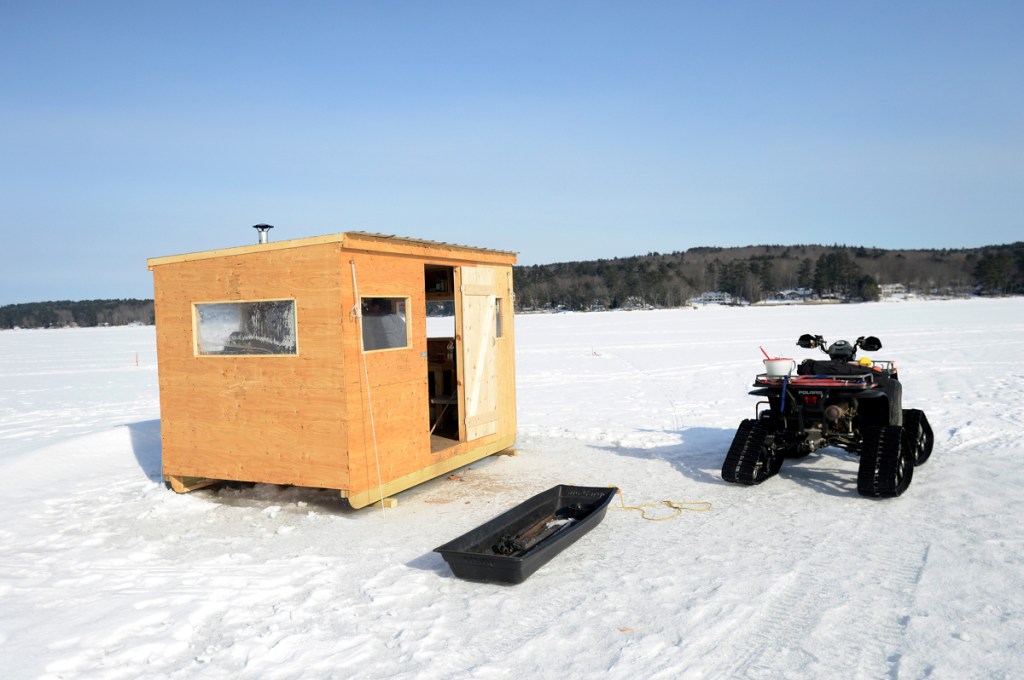

Comments are no longer available on this story